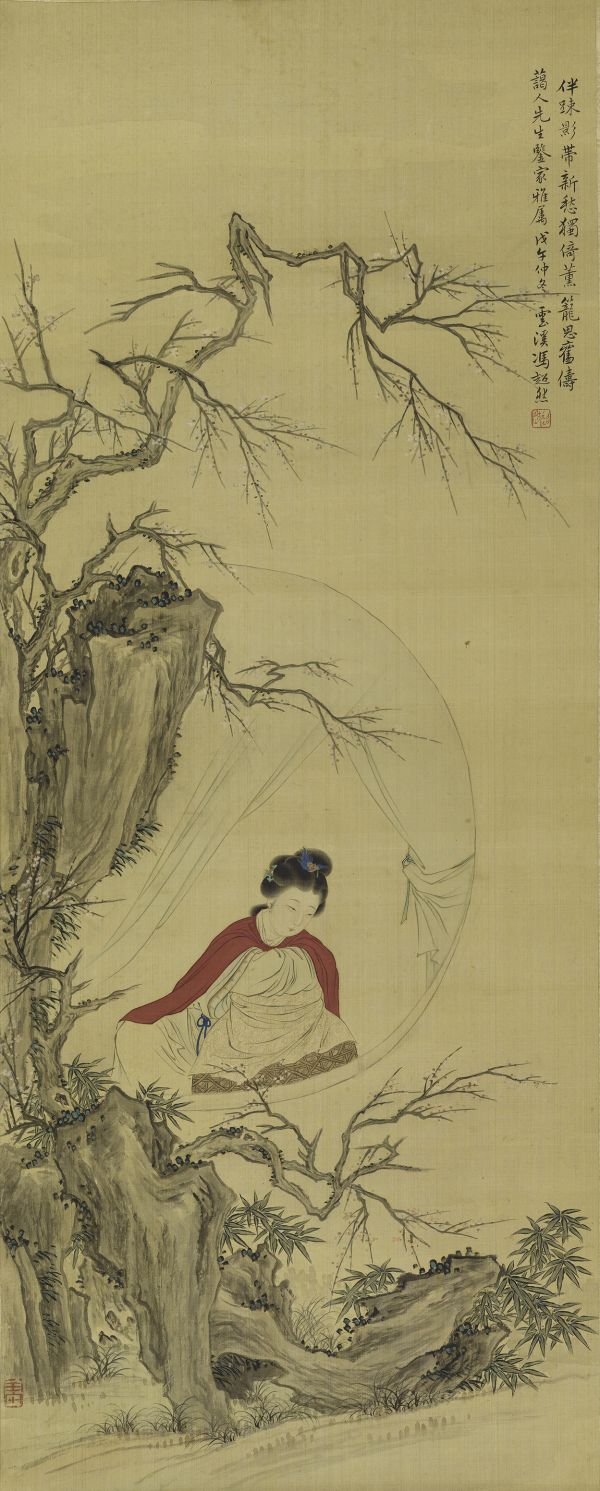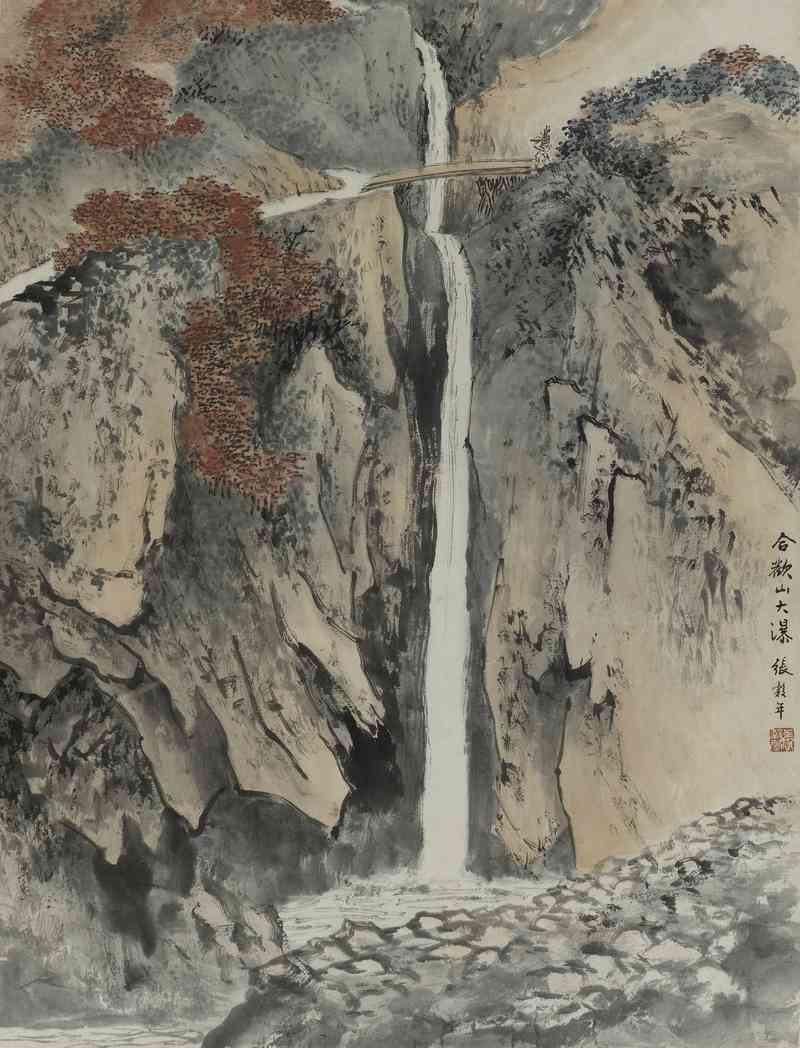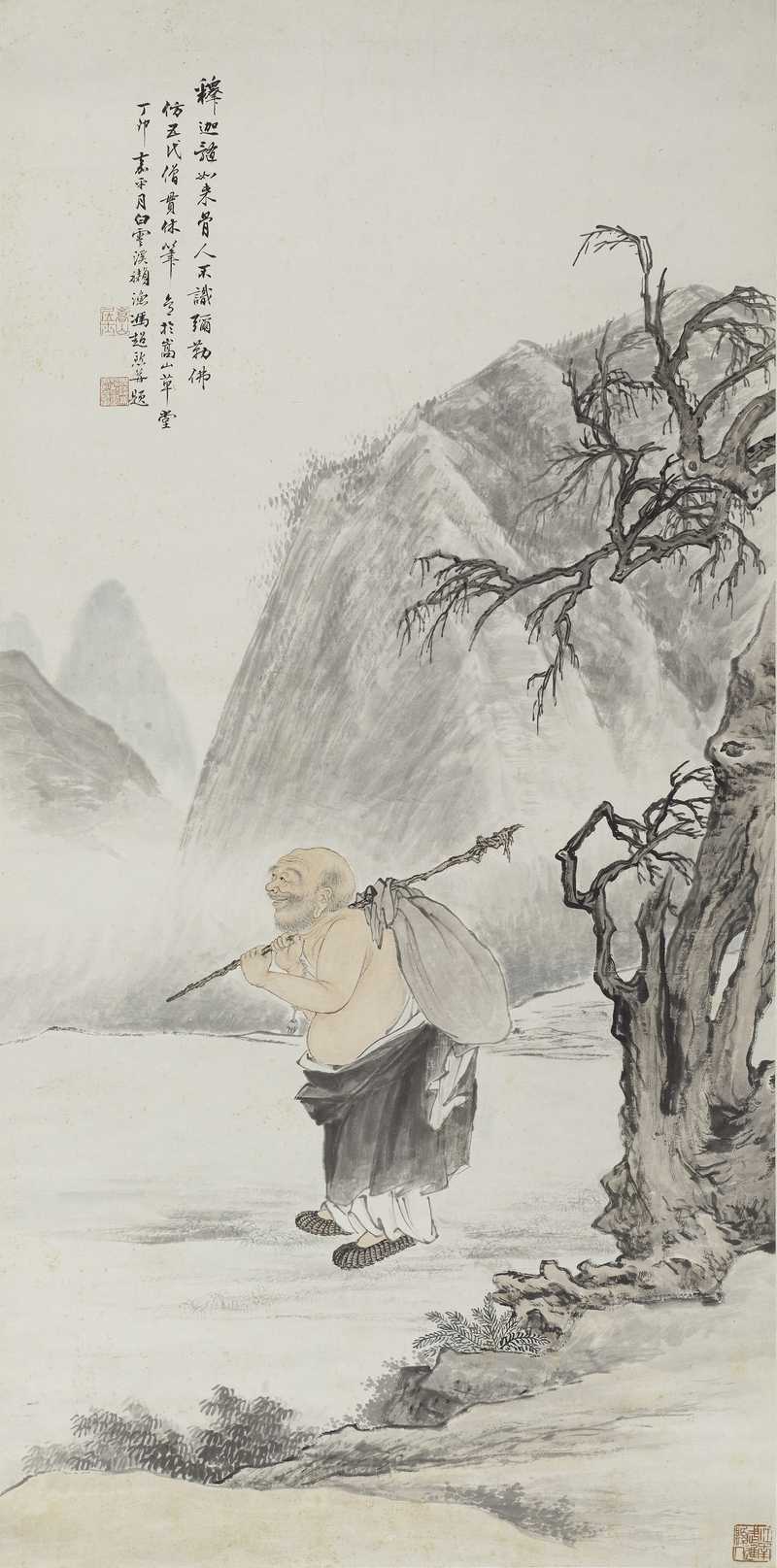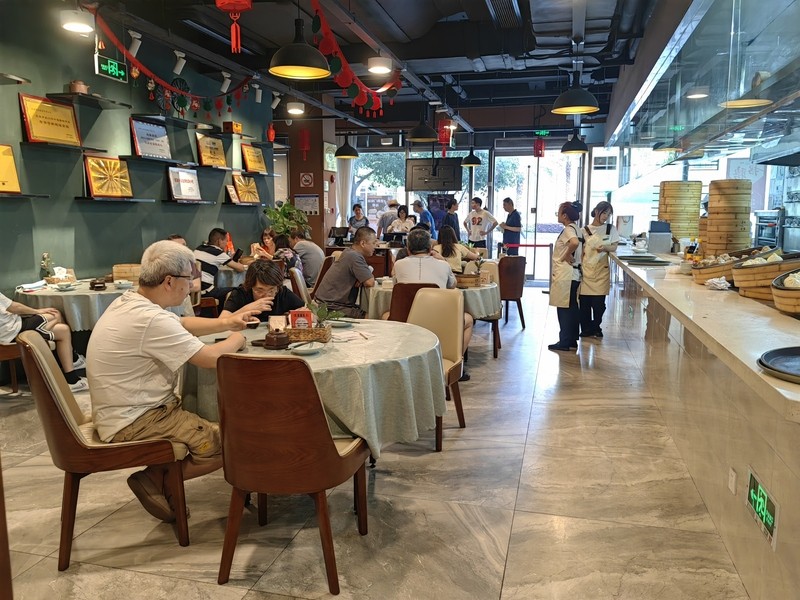Before his death, he said these words to his student Lu Yanshao, but never held an art exhibition. He was once known as a painter alongside Wu Hufan| Dongmeng | Lu Yanshao
Feng Chaoran was a Shanghai style painter who was once on par with Wu Hufan. He never held any art exhibitions throughout his life and silently cultivated painting masters such as Lu Yanshao.
Recently, the "Caotang Chuandeng - Feng Chaoran's Painting Art and Inheritance Special Exhibition" being held at the Lu Yanshao Art Academy explores and reviews the art and life of this Shanghai style painter who disregards fame and fortune from different perspectives.
"Three No Painters"
In 1927, 18-year-old Lu Yanshao first walked into the Songshan Thatched Cottage on Songshan Road in Shanghai. Here, he paid his respects to the painter Feng Chaoran. Feng Chaoran said to Lu Yanshao, "To learn painting, one must have a spirit of martyrdom, use it for life, do a good job in learning, and not place too much emphasis on fame and fortune." This sentence has been remembered by Lu Yanshao for a lifetime.
Feng Chaoran has a unique name, with the courtesy name Chaoran. His name is Di Ge, and his name is Shen De in the evening. He was born in 1882, originally from Changzhou, Jiangsu. He loved drawing since childhood and came to Songjiang, Shanghai with his father around the age of 15.

Feng Chaoran initially excelled in drawing characters, especially in painting ladies. His early works were based on Tang Yin, Qiu Ying, and Gai Qi. Collector Zheng Zhenduo once said that "Feng Chaoran's painting of beautiful women has taken the lead in the art world and is the driving force behind traditional painting of beautiful women.". As she entered middle age, Feng Chaoran's portrayal of beautiful women gradually shed the characteristics of the melon seed face and pointed chin depicted by Qing dynasty painters Gai Qi and Fei Danxu, and her facial features tended to be fuller and more rounded. He lived next to Wu Hufan's Meijing Bookstore and read through the Wu family's collection. With a broad vision, he began to explore landscape, flower, and bird paintings. He occasionally engraves and in his later years specialized in landscape painting. It can be said that Feng Chaoran is an all-around painter who excels in everything.
In the maritime art world of the 1930s and 1940s, Feng Chaoran, along with Wu Hufan, Wu Beiqiu, and Wu Zishen, were collectively known as the "Three Wu and One Feng". Some people jokingly refer to Feng Chaoran as the "three non painters" among the four, who have no family background, no prominent family background, and no teacher-student relationship. This commoner born artist, with his hard work and artistic wisdom, has created his own artistic world in Shanghai, where experts abound.
Feng Chaoran's Plum Blossom Ladies in 1918
After the establishment of the People's Republic of China, Feng Chaoran served as a researcher at the Institute of Ethnic Art at the Central Academy of Fine Arts and a director of the East China Artists Association. His painting studio Songshan Caotang and Wu Hufan's Meijing Bookstore were once the two most famous private painting schools in Shanghai. In the small chamber of this stone gate, Feng Chaoran trained painting talents such as Lu Yanshao, Zhang Guinian, Zheng Mukang, Cheng Jiuzi, Chen Xiaocui, and Tang Yifang.
Feng Chaoran never held a personal art exhibition in his lifetime, and he also declined others to hold exhibitions for him. He believes that "even if the painting industry achieves success and has a higher reputation than its peers, it is only good luck that comes with no setbacks in work. It should not be exposed or made public." He also never holds exhibitions for teachers and students. Disciple Zhang Guinian always felt "trembling and not daring to violate the teacher's teachings" when recalling the teacher's teachings of "not promoting, not admiring fame and fortune, playing with virtue, and learning new things through reviewing the old".

Feng Chaoran once wrote his own question, "What's the point of planning for prosperity and decline? It's not about seeking knowledge." This sentence is a reflection of his broad mindedness and noble personality. In the 1940s, the "Art Yearbook" introduced Feng Chaoran as follows: "Ju Heng Le Dao Ren Shan, regards others as his own affairs. However, he has a simple and peaceful nature, and does not boast about his art. Art enters the Dao, and his cultivation can be seen from this."
Zhang Gu Nian Hehuan Mountain Waterfall
"Drawing cannot be too similar"
In the "Caotang Chuandeng - Feng Chaoran's Painting Art and Inheritance Special Exhibition" currently being held at the Lu Yanshao Art Academy, two exhibits provided by Lu Heng, the son of Lu Yanshao, are quite eye-catching. One piece is "Bamboo and Stone Calligraphy Fan" given by Feng Chaoran to Lu Yanshao. The postscript reads "A true gentleman with an humble heart, if a stone can speak, it will be admirable", in order to encourage him to become a true gentleman with an humble heart and integrity.
The other piece is Feng Chaoran's "Shushi Pingyuan Calligraphy Fan" for Lu Yanshao. The paintings on the fan pay tribute to the predecessors of the art world using traditional techniques, while the characters express lofty aspirations and aspirations through Chairman Mao's poetry, hoping to inherit and promote the spirit of Chinese painting along the way.

According to Lu Heng's recollection, his father first started learning painting by copying Dai Chunshi's "Ink and wash Landscape Scroll" from the Qing Dynasty, which Feng Chaoran had visited. At that time, Lu Yanshao would go from Nanxiang to Feng Chaoran's house twice a month, and each time he would ask Mr. Feng to correct his prepared notebook. Feng Chaoran modified a few strokes for him, and he brought back some new paintings for copying. Feng Chaoran felt that Lu Yanshao had a good foundation in writing and soon asked him to copy the authentic works of famous masters such as the Four Kings.
Lu Yanshao emphasizes the Dharma in his paintings, but is not limited to it. He has a broad perspective and takes many methods, which is very prominent among Feng Chaoran's disciples. Feng Chaoran proudly said to others, "Their students are all like teachers, and I have a student who is not like a teacher." "My father had such an open-minded teacher, which is of great significance for him to deliberately innovate and stand up for himself in the future," Lu Heng recalled.
Feng Chaoran's nephew Zhang Guinian is also his student, and Zhang Guinian is several years younger than Lu Yan. Once, Feng Chaoran said to the two of them, "Since the Yuan and Ming dynasties, Chinese landscape painting has been passed down in an orderly and continuous manner, with a line passed down from generation to generation. Now that this line has been passed down to me, you two work hard and there is hope that you can continue to hang it."
Lu Yanshao's Hidden Residence in Eastern Mongolia in 1988
In the memory of Feng Tianqiu, the grandson of Feng Chaoran, his grandfather only praised his disciple once in his life, and this disciple was Lu Yanshao. After only a few years of apprenticeship, Lu Yanshao made great progress in his skills. He bought a few acres of land in Fuqingwu, Shangbai Mountain, Zhejiang to establish a farm, planting trees for farming while devoting himself to studying calligraphy and painting. During the Japanese invasion of China, Lu Yanshao went to Sichuan. After the victory of the Anti Japanese War, he returned to Shanghai from Sichuan. Not only was his brushwork outstanding, but he also created his own unique style in landscape painting. Selling paintings for a living was not a problem. However, Lu Yanshao chose to return to the farm and accompany the pear trees, working tirelessly to continue the entire painting industry.

For decades, Feng Chaoran, who had never left praises for his disciples in newspapers, went against the norm and wrote an article titled "Talking about Fuqing Li" in the newspaper: "Lu Ziyan, who had been wandering for thirty years, completed his painting skills and did not become complacent. He lived in seclusion at Fuqing Fortress in Wukang, opened up land for a farm, and planted a thousand pear trees... Now, Yan Shao has a simple and prosperous heart, obscured the radiance, built houses on green cliffs, and controlled the eastern domain of the Si River. The orange of a thousand heads of wooden slaves, so the five colored melons of Marquis, and the former sages of the Fang Dynasty, are no more worthy. Yu Yanshao, who is both high and young, is proud." "People are rare and not worth reading for a long time. Therefore, it is important to write a book with a clear understanding. There is a sense of understanding in the world, and one should cherish the private thoughts of others."
Feng Chaoran also criticized his beloved disciple. During his time in Chongqing, Lu Yanshao created a calligraphy style that resembled a non clerical style, with broad horizontal strokes and thin vertical strokes. He believed it had a sense of antiquity. Unexpectedly, he was criticized by Feng Chaoran as a "heavenly book" and difficult to understand.
"Mr. Feng has been using words throughout his life to preach, teach, and dispel doubts about my father. The words' martyrdom spirit ',' one line passed down from generation to generation ', and' unlike Mr. 'have had a profound impact on my father's artistic career," said Lu Heng.
In April 1954, Feng Chaoran told Lu Yanshao on his deathbed that "painting should not be too similar," which became the driving force behind Lu Yanshao's continuous innovation and transformation in painting.
The Ancient and Rare Phase Picture of Master Di Ge and Zheng Mukang's Portrait of Wu Hufan in 1954

Clever brushstrokes with divine intent, passing the light in the thatched cottage
Feng Chaoran is 12 years older than Wu Hufan. Since 1927, the two of them have been living next to each other on Songshan Road in Shanghai, talking about everything. Even their disciples have become art friends, becoming a beautiful story in the art world. Wu Hufan is not only a master of maritime painting, but also a famous calligrapher and painter appraiser. At Wu Hufan's home, Feng Chaoran often admires his collection, accumulating over time and possessing a keen eye for collection and appraisal.
In 1954, at the age of 72, Feng Chaoran passed away. Wu Hufan, who had been his neighbor for decades, was deeply saddened. He collaborated with Feng Chaoran's disciple Zheng Mukang to complete a portrait of Feng Chaoran in memory of his close friend. Now, this work has become the poster background for the "Caotang Chuandeng - Feng Chaoran's Painting Art and Inheritance Special Exhibition".
In addition to this precious portrait painting, there are also many highlights of this exhibition. In the literature display area, Feng Chaoran's personal experience and teacher-student interactions were presented to the audience. In the exhibition area, there are 53 works by Feng Chaoran, most of which are the first to meet the audience. In addition, there are 24 works by his disciples.
These works are divided into four parts: the figure painting section "Walking Alone in the Painting Altar", the landscape painting section "North and South Mountains and Rivers", the flower and bird painting section "Wonderful Brush and Divine Meaning", and the disciple section "Grass Hall Passing Lights". The Lu Yanshao Art Academy has carefully selected representative works of nine disciples, including Lu Yanshao, Zheng Mukang, Zhang Guinian, Wu Yifeng, Chen Xiaocui, Tang Yifang, Feng Rangxian, Sun Qionghua, and Tang Guanyu. Although these nine artists are all disciples of the "Feng Gate", their works have different appearances. Viewers can feel the different personal artistic concepts and style choices inherited by art masters of the same origin and lineage.

Feng Chaoran Bag Monk Picture in 1927
Lu Yanshao's disciple, a professor at Shanghai Normal University, and painter Che Pengfei told Tang Zheming, an art historian and painter, that Feng Chaoran's paintings inherited the tradition of maritime painting and also opened up the mainstream style of maritime painting in the future. He never left any writings throughout his life, but it can be seen from his postscripts and even from his teachings on later generations that he not only adhered to the spirit of "martyrdom" in Southern painting, but also adhered to the tradition of his predecessors, Jin Zhen Du Ren, and took it as his responsibility to spread the teachings with perseverance.




